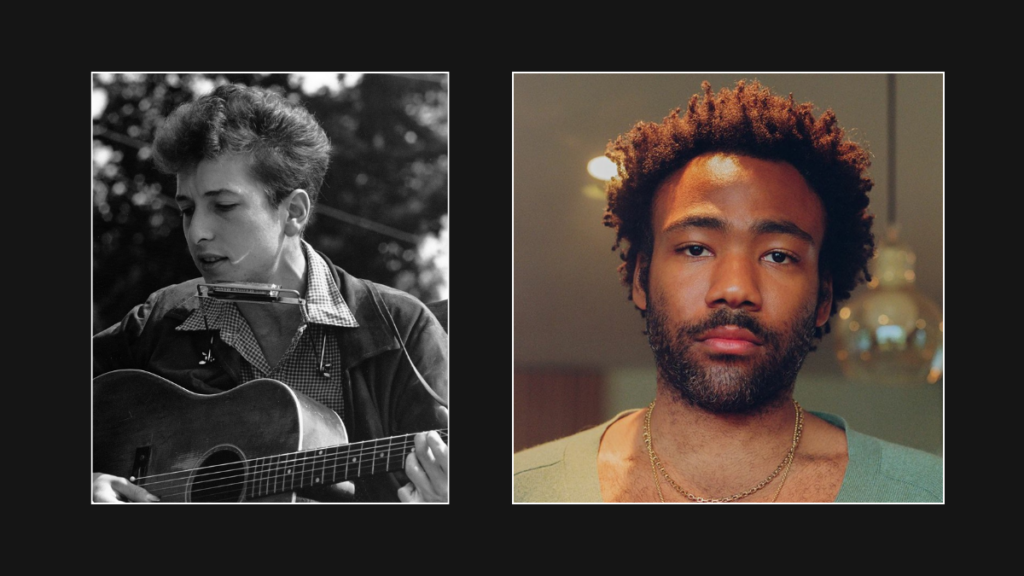Music has long served as a powerful tool for social change, with protest songs acting as the anthems of resistance, rebellion, and revolution. From the folk tunes of the 1960s to the modern-day beats of hip-hop, these songs have not only provided a voice for the voiceless but have also played a critical role in shaping public opinion and inspiring collective action. Let’s trace the evolution of protest songs, highlighting key tracks that have fuelled social and political movements over the decades.
The 1960s: The Birth of Modern Protest Music
The 1960s were a turbulent time in American history, marked by the Civil Rights Movement, the Vietnam War, and a growing counterculture that challenged the status quo. This era saw the rise of folk music as a vehicle for protest, with Bob Dylan emerging as one of the most influential voices of the movement.

Dylan’s ‘Blowin’ in the Wind’ (1963) became an anthem for civil rights, with its poignant questions about freedom, peace, and justice. The song’s simple yet profound lyrics resonated with activists and ordinary people alike, making it a rallying cry for change.
Another significant track from this era is ‘The Times They Are a-Changin’’ (1964), where Dylan urged listeners to embrace the sweeping social changes and warned those in power that they could not stop the tide of progress.
Artists like Pete Seeger and Joan Baez also contributed to the protest music of the 60s, using their platforms to speak out against war, racism, and inequality. Seeger’s adaptation of ‘We Shall Overcome’ became synonymous with the Civil Rights Movement, echoing in marches and demonstrations across the country.
The 1970s: Expanding the Protest Palette
As the 60s gave way to the 70s, protest music began to diversify in both sound and subject matter. The Vietnam War continued to dominate the cultural landscape, and artists responded with increasingly bold and direct messages.
Marvin Gaye’s ‘What’s Going On’ (1971) exemplified this shift, blending soul, jazz, and protest into a seamless commentary on war, poverty, and environmental destruction. Gaye’s smooth vocals and introspective lyrics captured the disillusionment of a generation grappling with the aftermath of the 60s and the ongoing conflict in Vietnam.
Meanwhile, in Jamaica, reggae music was emerging as a powerful voice of resistance. Bob Marley’s ‘Get Up, Stand Up’ (1973) called for empowerment and action against oppression, reflecting the struggles of the poor and marginalized not just in Jamaica, but around the world.
The 1980s and 1990s: From Punk to Hip-Hop
The 80s and 90s saw protest music take on new forms as punk and hip-hop became the genres of choice for dissent. Punk rock, with its raw energy and DIY ethos, became a platform for challenging authority and societal norms. Bands like The Clash used their music to address issues ranging from unemployment to police brutality, as seen in tracks like ‘London Calling’ (1979) and ‘Police on My Back’ (1980).
Hip-hop, emerging from the streets of New York City, became the voice of a generation marginalized by systemic racism and economic inequality. Grandmaster Flash and the Furious Five’s ‘The Message’ (1982) offered a stark portrayal of inner-city life, highlighting the harsh realities of poverty, violence, and social neglect. Public Enemy’s ‘Fight the Power’ (1989) took this further, explicitly calling out institutional racism and urging African Americans to fight back against oppression.
The 2000s and Beyond: Protest Music in the Digital Age
As we entered the 21st century, protest music continued to evolve, adapting to new forms of media and addressing a broader range of issues. The rise of the internet and social media gave artists a direct line to their audiences, allowing protest songs to spread rapidly and influence global movements.
One of the most impactful protest songs of the 21st century is Childish Gambino’s ‘This Is America’ (2018). The song and its accompanying video are a searing indictment of gun violence, police brutality, and the systemic racism embedded in American society. Gambino’s stark imagery and genre-blurring sound highlighted the complexities of modern-day America, resonating with a wide audience and sparking conversations across the globe.
Other artists, like Kendrick Lamar with ‘Alright’ (2015), have used their music to comment on racial inequality and police violence, becoming anthems for the Black Lives Matter movement.
Beyoncé’s ‘Formation’ (2016) also made waves, celebrating black culture and calling out police brutality, with its powerful Super Bowl performance further cementing its place in the protest music canon.
The Power of Protest Music
From Bob Dylan to Childish Gambino, protest music has evolved in sound and style, but its core purpose remains the same: to challenge, to inspire, and to give voice to those who demand change. As society continues to face new challenges, protest music will undoubtedly remain a vital tool in the ongoing struggle for justice and equality, reminding us of the power of song to both reflect and shape the world around us.
Also Read: The Visual Poetry of Lana Del Rey’s Album Covers
–Silviya.Y

